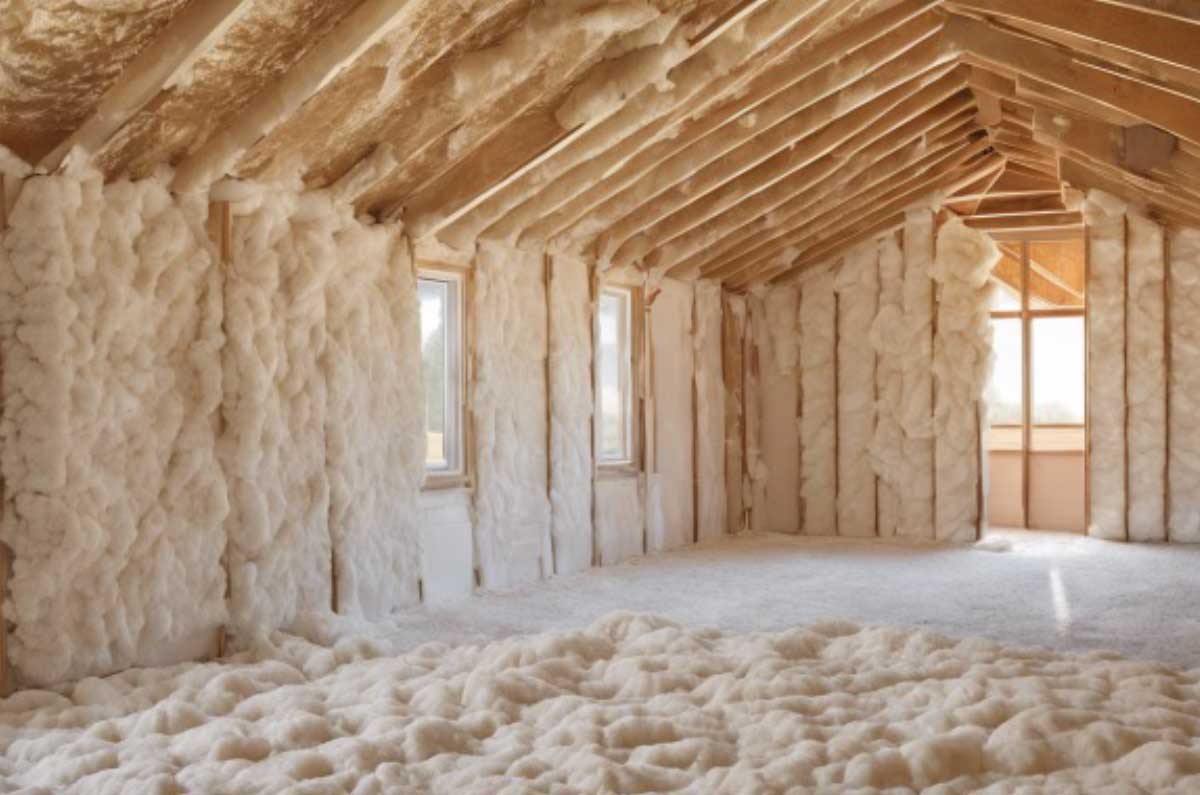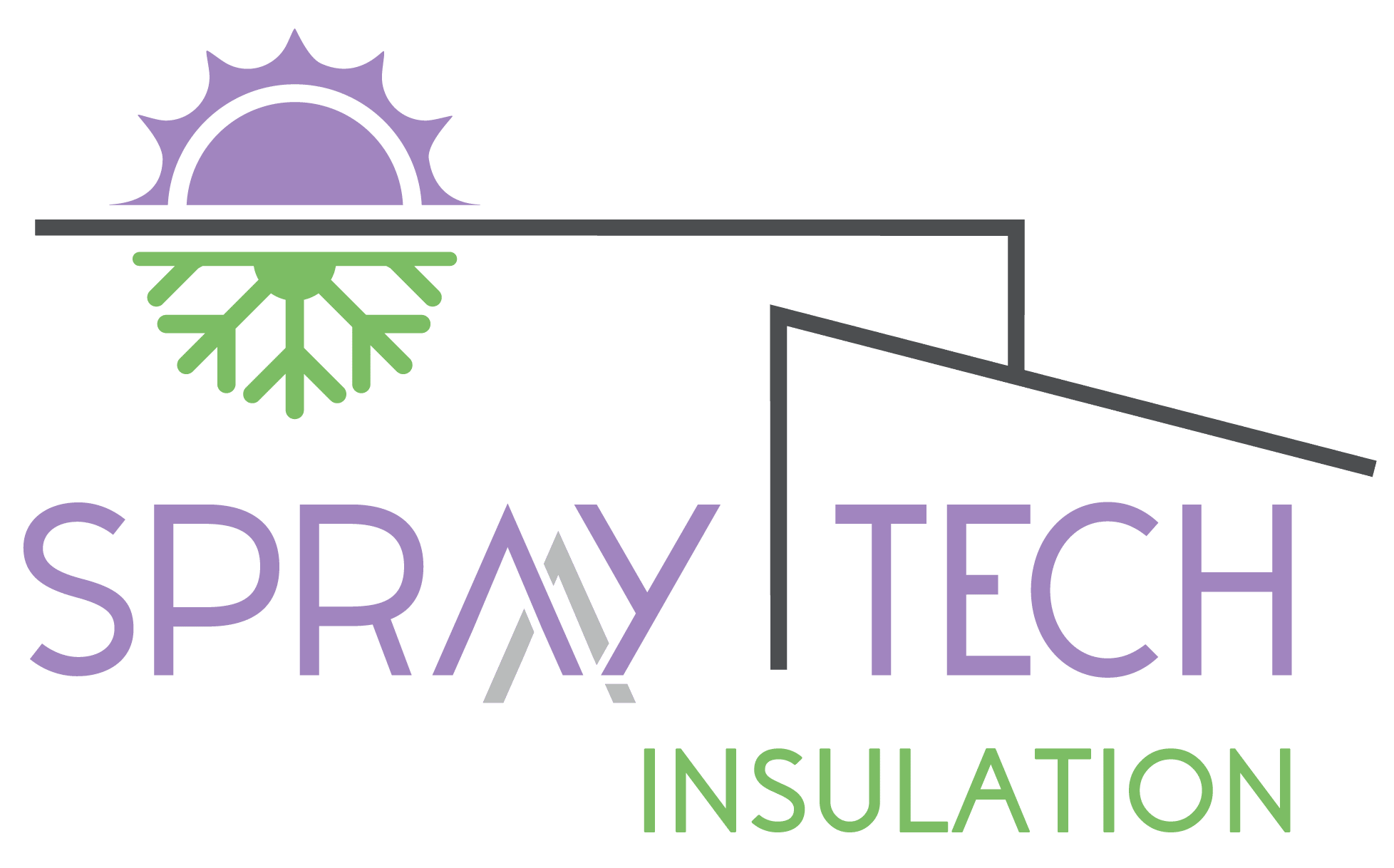
Homeowners are constantly seeking ways to enhance their living spaces and reduce energy costs, prompting a surge in popularity for spray foam insulation. This innovative solution combines insulation, an air barrier, and a CCMC approved vapor barrier minimizing air movement within the building and mitigating energy loss across changing seasons. Whether opting for open-cell or closed-cell varieties, spray foam insulation offers both benefits and drawbacks that should be carefully considered when exploring its potential for optimizing home comfort and efficiency.
From improving energy savings to providing exceptional insulation, the pros and cons of spray foam insulation span a wide spectrum. This comprehensive guide delves into the advantages and disadvantages of spray foam insulation, evaluating its safety, flammability, waterproofing capabilities, and overall value. By understanding the nuances of this insulation method, homeowners can make informed decisions aligned with their specific needs and priorities.
What is Spray Foam Insulation?
Spray foam insulation is a unique insulation and sealing product that is applied on-site to conform to the surface where it is sprayed. It is made by mixing and reacting two unique liquid components, which react quickly when combined and expand on contact to create insulating foam that seals gaps and forms air, moisture, and vapor barriers.
Definition and Types of Spray Foam Insulation
There are three primary types of spray foam insulation:
- High-Density Spray Foam
- 3 lbs./cubic ft., closed-cell foam
- R-Values start at 5.5 per inch
- Often used for exterior and roofing applications
- Medium-Density Spray Foam
- 2 lbs./cubic ft., closed-cell foam
- R-Values start at 2 per inch
- Often used for continuous insulation, interior wall cavity fill, and unvented attic applications
- Low-Density Spray Foam
- 5 lbs./cubic ft., open-cell foam
- R-Values start at 3.6 per inch
- Often used for interior wall cavity fill and unvented attic applications
Applications and Uses
There are three major types of spray foam application systems: high-pressure, low-pressure, and one-component insulating foam sealants. Each system has unique advantages to fit the needs of different projects.
- High-Pressure Systems: Used by trained professionals to spray high-density, medium-density, and low-density spray foam, typically for larger projects like new building construction or renovations.
- Low-Pressure Systems: Typically applied by trained professionals around ductwork, electrical or piping penetrations, rim joists, and roof repairs. Effective for weatherizing older homes with many cracks, gaps, and wall penetrations.
- One-Component Insulating Foam Sealants: Generally used for small projects like sealing gaps and cracks. Available to both professionals and homeowners for energy savings and resource conservation. Bonds readily to various materials like wood, masonry, metal, glass, and plastics, setting and curing quickly to prevent air from crossing the foam barrier.
Typical uses for insulating foam sealants include filling gaps and cracks around window and doorframes, closing gaps around outside-wall penetrations made by gas lines, water faucets or dryer-vent hoses, and filling gaps inside the home caused by electrical line or HVAC vent penetrations.
Pros of Spray Foam Insulation
Excellent Thermal Insulation Properties
Spray foam insulation offers superior thermal insulation capabilities, boasting some of the highest insulation R-values available in the market. Its exceptional thermal resistance helps improve energy efficiency and comfort in homes and buildings. Closed-cell spray foam, in particular, exhibits a higher R-value per inch compared to open-cell foam, making it an excellent choice for maximizing insulation performance.
The Department of Energy estimates that 56 percent of a home’s energy is used for heating and cooling. By minimizing air infiltration and heat transfer, spray foam insulation can potentially save homeowners up to 15 percent on heating and cooling costs. Its ability to create a continuous air barrier and seal gaps effectively contributes to these energy savings.
Air Sealing and Moisture Resistance
One of the key advantages of spray foam insulation is its ability to act as an air barrier, preventing air leakage and unwanted air exchange. This air-sealing property not only improves energy efficiency but also enhances indoor air quality by minimizing the infiltration of airborne pollutants and allergens.
Closed-cell spray foam, in particular, offers excellent moisture resistance due to its dense, closed-cell structure. It provides a higher resistance to water vapor compared to open-cell foam, making it suitable for damp environments or areas prone to potential water intrusion. While not a standalone waterproofing solution, closed-cell spray foam can prevent moisture passage to a certain extent.
Structural Reinforcement
In addition to its insulating properties, spray foam insulation can contribute to the structural integrity of a building. When applied, it hardens and adheres directly to the building materials, effectively becoming part of the structure. This direct contact allows the spray foam to shoulder structural loads, adding rigidity and reinforcement to walls and ceilings.
Research by the Canadian Home Builder’s Association (CHBA) has shown that walls installed with closed-cell spray foam can have a racking strength up to 300% greater than walls without it. The high density and superior rigidity of closed-cell foam make it an ideal choice for improving structural strength and stability.
Long-Lasting and Low Maintenance
Spray foam insulation is renowned for its durability and longevity, with an expected lifespan of 80 to 100 years. This exceptional lifespan can potentially outlast the building itself, making it a truly long-term investment. Additionally, spray foam insulation requires minimal maintenance once installed correctly, as it does not sag, settle, or lose performance over time.
Unlike other insulation materials that may require periodic replacement or top-ups, spray foam insulation offers a “set it and forget it” solution, providing consistent performance without the need for frequent upkeep or maintenance costs. Its durability and low maintenance requirements contribute to its overall value and appeal as an insulation choice.
Cons of Spray Foam Insulation
Health Concerns
One of the primary concerns surrounding spray foam insulation is the potential health risks associated with its chemical composition and installation process. The isocyanates used in spray foam can cause skin, eye, and lung irritation, asthma, and sensitization when absorbed through the skin or inhaled. Individuals with a history of respiratory issues, allergies, or prior isocyanate sensitization should exercise caution and consider safer alternatives.
To mitigate these risks, it is crucial to follow proper safety protocols during installation, including adequate ventilation, the use of personal protective equipment (PPE), and adhering to recommended re-entry times after application. Homeowners and occupants need to follow the manufacturers guidelines on re-entry into the property, which is usually 24 hours after the application process is complete.
Expensive Installation Costs
One of the significant drawbacks of spray foam insulation is its relatively high cost compared to other insulation materials. The installation process requires specialized equipment and trained professionals, contributing to the overall expense. While spray foam insulation can potentially save on energy costs in the long run, the upfront investment can be substantial, making it a less accessible option for some homeowners.
Limited Application Scenarios
While spray foam insulation offers excellent insulation and air-sealing properties, it may not be suitable for all applications. Improper application or curing can lead to gaps or over-expansion, compromising the insulation’s effectiveness. Additionally, the installation process can be messy and requires precision, further emphasizing the need for experienced professionals.
Conclusion
Spray foam insulation offers a comprehensive solution for homeowners seeking enhanced energy efficiency, comfort, and structural integrity. While the upfront costs may be higher, the long-term benefits of reduced energy bills, improved indoor air quality, and low maintenance requirements make it a compelling investment. However, potential health concerns and environmental impacts should be carefully considered, and proper safety protocols must be followed during installation.
For those in the Ottawa region looking for superior insulation solutions, Spray-Tech Insulation specializes in spray foam insulation services, providing expert installation and real-life examples of the benefits it can bring to your home. With their expertise, you can maximize the advantages of spray foam insulation while mitigating potential drawbacks, ensuring a comfortable and energy-efficient living space tailored to your needs.
FAQs
- Are there specific places where spray foam insulation should not be applied?
Spray foam should not be used near ceiling lights or heating appliances due to its flammable nature. Applying spray foam near these items could pose a fire hazard or cause damage to the fixtures themselves, especially if it cures around any wiring. - Is there a risk of mold growth with spray foam insulation?
Spray foam insulation itself does not support mold growth. It does not rot, rust, or deteriorate like wood or metal, thereby preventing it from becoming a food source or a suitable environment for mold to thrive. Proper application ensures that it remains mold-free. - Is spray foam really worth it?
Yes, spray foam insulation is definitely worth it for many homeowners and businesses. It offers superior thermal insulation compared to traditional materials, leading to significant energy savings on heating and cooling costs. Additionally, spray foam provides excellent air sealing, which can improve indoor air quality and reduce drafts, making your space more comfortable. Its durability and long lifespan further enhance its value, ensuring you get a return on your investment over time. - How many years does spray foam last?
Spray foam insulation is designed to last for the lifetime of the building in which it is installed. Typically, it can last around 80-100 years without degrading. This long lifespan means that once installed, you won’t have to worry about replacing it, providing you with consistent insulation performance over many decades. - Does spray foam have any side effects? Are they really a concern like people say it is?
Spray foam insulation, when installed properly by trained professionals, is safe and effective. During installation, the area should be well-ventilated, and occupants should avoid the area until the foam has fully cured. Concerns about side effects often stem from improper installation or using low-quality products. Choosing a reputable spray foam company and high-quality spray foam can mitigate these risks. Once cured, spray foam is inert and does not produce gas, making it a safe option for insulation. - What time of year is best for spray foam insulation?
Spray foam insulation can be installed year-round, but certain times of the year may be more advantageous. Spring and fall are often ideal because the moderate temperatures ensure optimal curing conditions. However, professional installers can adjust their techniques to ensure proper application even in extreme temperatures. Scheduling your installation during these times can also help avoid peak demand periods, potentially offering more flexibility and quicker service.
continue reading

